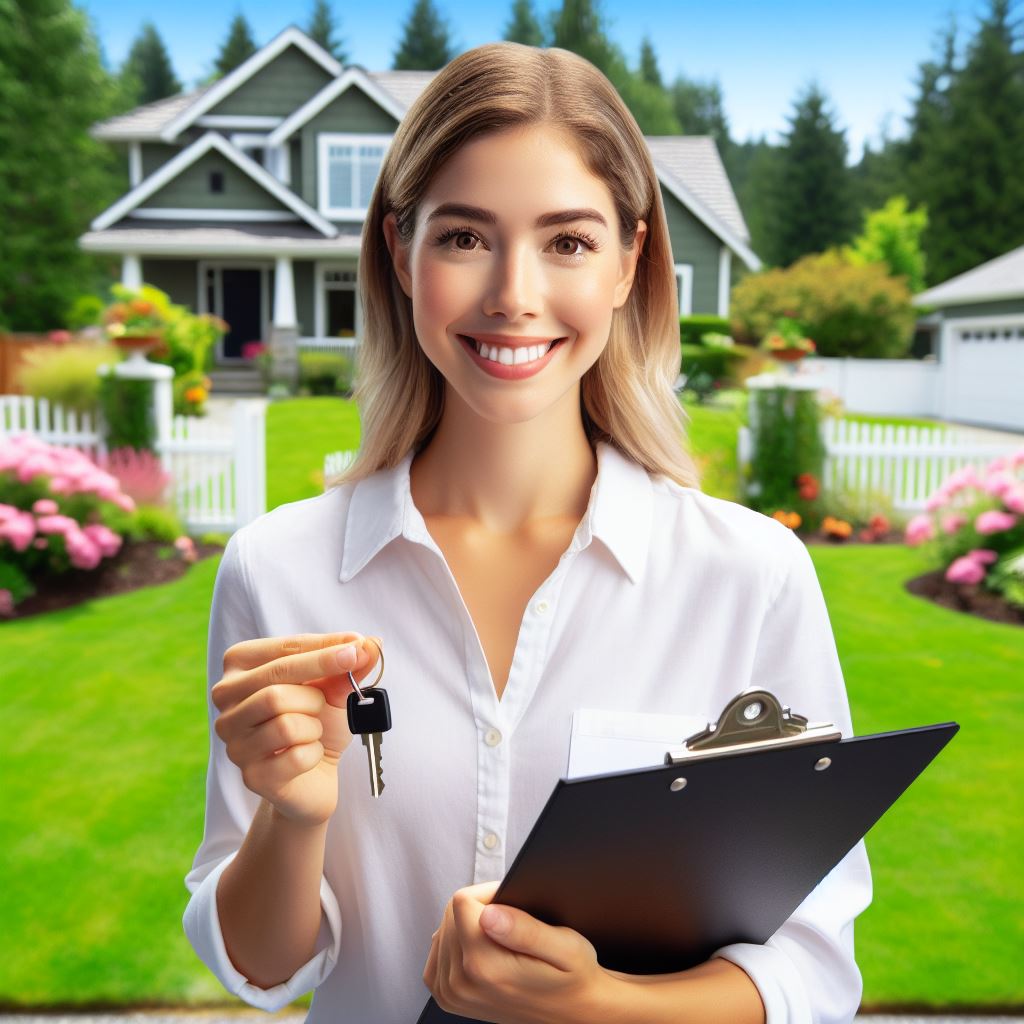Introduction
A. Definition of green homes
Green homes, also known as sustainable homes, are houses designed and built to have a minimal impact on the environment.
These homes incorporate eco-friendly materials, utilize renewable energy sources, and prioritize energy efficiency to reduce their carbon footprint.
B. Importance of green homes in the US market
In recent years, green homes have gained significant importance in the US market.
With a growing awareness of environmental issues and a desire to reduce energy consumption, more and more people are opting for green homes.
These houses not only benefit the environment but also provide numerous advantages to homeowners.
The rising popularity of green homes can be attributed to their energy efficiency.
These homes are equipped with state-of-the-art technologies such as solar panels, smart thermostats, and energy-efficient appliances that significantly reduce energy consumption and lower utility bills.
Moreover, green homes promote healthier living environments by using non-toxic building materials, better insulation, and superior ventilation systems.
C. Purpose of the blog post
This blog post aims to emphasize the importance of green homes in the US market and showcase their numerous benefits.
By choosing green homes, individuals can contribute to a sustainable future while enjoying lower energy costs and improved indoor air quality.
Basically, as the demand for sustainable living solutions grows, green homes have emerged as a popular choice in the US market.
Their eco-friendly features and energy-efficient design make them appealing to both environmentally conscious individuals and those looking for cost-effective housing options.
The next sections of this blog will delve into the various aspects and advantages of green homes to provide a comprehensive understanding of their rise in the US market.
Factors Driving the Rise of Green Homes
A. Environmental consciousness and sustainability
- Growing awareness of the impact of traditional homes on the environment has led to increased demand for green homes.
- Green homes are designed to be energy-efficient, reducing carbon emissions and dependence on fossil fuels.
- The use of sustainable materials and construction practices in green homes further minimizes environmental impact.
- Homeowners are increasingly seeking ways to reduce their carbon footprint and live a more sustainable lifestyle.
B. Cost-saving benefits
- Green homes are designed to be energy-efficient, resulting in lower utility bills and long-term cost savings for homeowners.
- Energy-efficient features such as solar panels and energy-efficient appliances help reduce energy consumption.
- Over time, the cost savings on utilities can outweigh the initial investment of building or purchasing a green home.
- Homeowners can also benefit from potential tax credits and incentives for installing energy-efficient systems and features.
C. Government incentives and regulations
- Governments at various levels have implemented incentives and regulations to promote the adoption of green homes.
- Tax incentives and grants are offered to homeowners who choose to build or renovate their homes with green features.
- Building codes and regulations have been updated to include energy efficiency standards, encouraging the construction of green homes.
- These incentives and regulations create a favorable environment for the growth of the green home market.
In general, the rise of green homes in the US market is driven by factors such as environmental consciousness and sustainability, cost-saving benefits, and government incentives and regulations.
This growing trend reflects a shift towards a more sustainable and energy-efficient approach to homeownership.
Read: Rental Market Shifts in Major US Cities
Benefits of Green Homes
A. Reduced energy consumption
Green homes are designed to be energy-efficient, resulting in significantly lower energy consumption.
By incorporating features like solar panels and energy-efficient appliances, homeowners can reduce their utility bills.
Moreover, reduced energy consumption contributes to a healthier environment by decreasing carbon emissions.
B. Improved indoor air quality
Green homes prioritize the use of non-toxic building materials to improve indoor air quality.
These homes are well-ventilated, ensuring proper air circulation and minimizing the presence of pollutants.
With cleaner indoor air, occupants can enjoy a healthier living environment and reduce the risk of respiratory issues.
C. Increased property value
Investing in a green home can lead to a higher property value in the long run.
Given the growing demand for sustainable living, homebuyers are willing to pay a premium for eco-friendly properties.
Homeowners can enjoy a higher return on investment and potentially sell their green homes at a profitable price.
D. Health and well-being advantages
Living in a green home has numerous health and well-being advantages for occupants.
From the use of natural light to the incorporation of green spaces, these homes promote mental and physical well-being.
Studies have shown that green homes can enhance productivity, improve sleep quality, and reduce stress levels.
In general, green homes offer a range of benefits that make them increasingly popular in the US market.
The reduced energy consumption not only saves homeowners money in the long run, but it also helps mitigate the environmental impact by lowering carbon emissions.
Improved indoor air quality ensures a healthier living environment, while the use of non-toxic materials reduces the risk of respiratory issues.
Additionally, green homes have a higher property value due to the high demand for sustainable living.
Lastly, the health and well-being advantages of green homes contribute to a better quality of life for occupants.
Considering all these benefits, it is no wonder that the rise of green homes in the US market is becoming more prominent.
Read: Luxury Real Estate Trends in the US for 2024
Trends in Green Home Construction and Design
A. Energy-efficient appliances and systems
Green homes in the US market are increasingly incorporating energy-efficient appliances and systems.
Homeowners are recognizing the long-term cost savings and environmental benefits of using energy-efficient products.
Energy-efficient appliances, such as refrigerators, dishwashers, and washing machines, consume less electricity than their traditional counterparts.
They are designed to minimize energy waste and reduce the overall carbon footprint of the home.
Additionally, green homes often feature energy-efficient heating, ventilation, and air conditioning (HVAC) systems.
These systems use advanced technologies to optimize energy usage, providing comfortable temperatures while minimizing energy consumption.
Homebuyers are increasingly seeking homes with energy-efficient appliances and systems due to their positive impact on both the environment and utility bills.
As the demand continues to rise, manufacturers are investing in new technologies to improve the efficiency of their products.
B. Water-saving features
Conserving water is another important trend in green home construction and design.
With growing concerns about water scarcity and the need for sustainable water management, homeowners are seeking ways to reduce water usage in their homes.
Green homes often incorporate water-saving features such as low-flow faucets, showerheads, and toilets.
These fixtures are designed to use less water while maintaining optimal performance.
They help homeowners save on water bills and contribute to a more sustainable water future.
In addition to fixtures, green homes employ rainwater harvesting systems.
These systems collect rainwater from roofs and store it for later use in irrigation or non-potable water needs, further reducing the reliance on freshwater sources.
The increased awareness of water conservation has led to the development of innovative technologies and practices in green home construction, encouraging homeowners to prioritize sustainable water usage.
C. Use of sustainable materials
Sustainable materials are a key aspect of green home construction and design.
Builders are now focusing on using materials that have a minimal impact on the environment throughout their lifecycle.
This trend involves utilizing renewable resources, recycled materials, and locally sourced products.
By opting for sustainably harvested wood, bamboo flooring, and recycled metal, builders reduce deforestation and contribute to a healthier ecosystem.
Green homes also aim to minimize waste during construction by recycling or reusing materials.
By implementing such practices, builders reduce the environmental impact of the construction process and promote a circular economy.
Increasingly, consumers are recognizing the importance of sustainable materials in their homes.
As a result, manufacturers are expanding their offerings to include a wider range of eco-friendly products and materials.
D. Incorporation of renewable energy sources
The integration of renewable energy sources is a prominent trend in green home construction.
Homeowners are increasingly installing solar panels, wind turbines, and geothermal systems to generate clean energy on-site.
Solar panels, in particular, have become more affordable and efficient, making them an attractive option for homeowners looking to reduce their carbon footprint.
These systems convert sunlight into electricity, reducing reliance on non-renewable energy sources.
Wind turbines and geothermal systems also provide homeowners with renewable energy alternatives.
While wind power harnesses the natural wind resources, geothermal systems utilize the heat from the earth to warm or cool homes.
The adoption of renewable energy sources not only reduces greenhouse gas emissions but also offers long-term energy cost savings for homeowners.
As technology continues to advance and costs decrease, the popularity of renewable energy in green homes is expected to further increase.
In essence, green home construction and design in the US market are experiencing several prominent trends.
Energy-efficient appliances and systems, water-saving features, sustainable materials, and the incorporation of renewable energy sources are all playing significant roles in shaping the future of green homes.
As homeowners and builders embrace these trends, we can expect a positive impact on both the environment and long-term sustainability.
Read: Remote Work: Its Impact on US Housing

Challenges and Considerations in Adopting Green Homes
A. Higher initial costs
Adopting green homes can be accompanied by certain challenges and considerations.
One primary challenge faced by individuals interested in sustainable living is the higher initial costs associated with green homes.
Unlike their conventional counterparts, green homes often require additional investments during the construction phase.
This can include the installation of energy-efficient systems, renewable energy sources, and sustainable materials.
The cost of these technologies is generally higher compared to traditional alternatives.
However, it is important to recognize that these upfront expenses can be offset by long-term savings through reduced energy consumption and lower utility bills.
B. Limited availability and awareness
Another challenge in adopting green homes is the limited availability and awareness in the US market.
While the concept of green homes is gaining traction, they are not yet widely available in all regions.
This limitation can make it challenging for individuals to find a green home that meets their specific preferences and is located in their desired area.
Additionally, the lack of awareness among potential buyers further limits the demand for green homes.
Many people are still unaware of the benefits and options available in sustainable housing.
C. Overcoming misconceptions and stereotypes
Overcoming misconceptions and stereotypes is another crucial consideration in the adoption of green homes.
Some individuals may still perceive green homes as less aesthetically appealing or lacking in comfort.
However, it is important to debunk these myths and educate the public about the numerous benefits of sustainable living.
Green homes can be designed to integrate modern aesthetics, comfort, and functionality.
Emphasizing the incorporation of innovative design and technology can help change these misconceptions and stereotypes.
In a nutshell, adopting green homes comes with its own set of challenges and considerations.
Higher initial costs can be a barrier for some individuals, but the long-term savings and environmental benefits outweigh the upfront expenses.
Limited availability and awareness present obstacles for potential buyers, highlighting the need for increased access and education.
Overcoming misconceptions and stereotypes surrounding green homes is crucial to promote their wider acceptance.
By addressing these challenges and considerations, the US market can further embrace the rise of green homes and move towards a sustainable future.
Read: Millennial Buyers: Shaping US Real Estate
Examples of Successful Green Home Projects
A. LEED-certified developments
- The US market has seen a rise in the number of LEED-certified green home developments.
- LEED, or Leadership in Energy and Environmental Design, is a rating system that recognizes sustainable building practices.
- One of the notable LEED-certified developments is The Crossings in Austin, Texas.
- The Crossings includes energy-efficient features, water-saving mechanisms, and native landscaping.
- Another LEED-certified development is Greenbridge in Seattle, Washington, which focuses on urban sustainability.
- LEED-certified developments contribute to reducing energy consumption and carbon emissions in the housing sector.
B. Net-zero energy homes
- Net-zero energy homes are another successful example of green home projects in the US market.
- These homes generate as much energy as they consume, resulting in a balance or surplus of energy.
- The Revive Sustainable Showcase Home in Oregon is a prime example of a net-zero energy home.
- It incorporates renewable energy systems, energy-efficient appliances, and passive solar design.
- Net-zero energy homes contribute to reducing reliance on fossil fuels and promoting renewable energy sources.
C. Renovation of existing homes to green standards
- Renovation of existing homes to green standards is an important aspect of promoting sustainability in the US market.
- The Greening San Francisco program aims to transform older homes into energy-efficient and environmentally-friendly residences.
- Homeowners can make improvements like installing energy-efficient windows, upgrading insulation, and using sustainable materials.
- By renovating existing homes to green standards, the US market further expands its green housing inventory.
- Renovations also provide opportunities to educate homeowners on sustainable practices and resource conservation.
These examples demonstrate the growing popularity and success of green home projects in the US market.
LEED-certified developments, net-zero energy homes, and renovations to existing homes all contribute to creating a more sustainable housing sector.
By emphasizing energy efficiency, water conservation, and use of sustainable materials, these projects set a standard for future green home construction.
The rise of green homes in the US market reflects society’s increasing awareness of the importance of sustainable living and the need to reduce environmental impact.
With continued support and investment, these projects can inspire further innovation and advancement in green home technologies.
Conclusion
A. Recap of the rise of green homes in the US market
Green homes have gained significant popularity in the US market due to their focus on sustainability and environmental impact reduction.
B. Importance of further adoption for a sustainable future:
The continued adoption of green homes is crucial for a sustainable future, as they promote energy efficiency, reduce carbon emissions, and conserve natural resources.
C. Encouragement for readers to explore green home options
Readers are encouraged to explore green home options to contribute to a healthier planet, benefit from energy savings, and enjoy a higher quality of living.
By choosing green homes, individuals can support the growth of the green building industry and make a positive impact on both the environment and their own lives.
Investing in energy-efficient features, such as solar panels and smart technology, can not only reduce utility bills but also increase property value.
Additionally, green homes provide a healthier living environment by using low-toxic materials and improving indoor air quality.
It is crucial for society to embrace and prioritize the development of green homes to ensure a sustainable and thriving future for generations to come.
Let us all take part in building a greener future by embracing green homes and creating a positive change in the US housing market.




